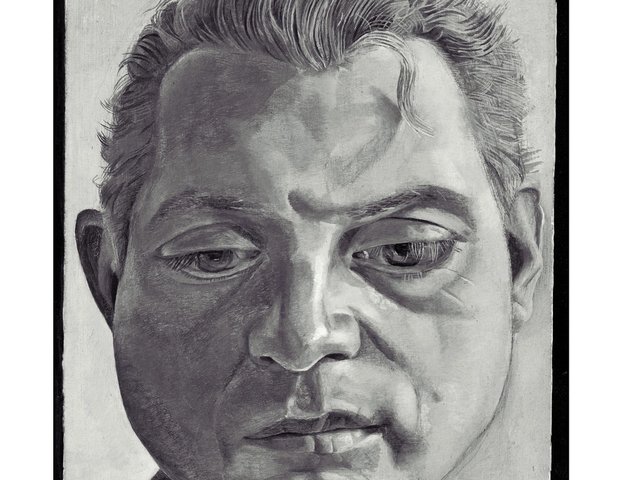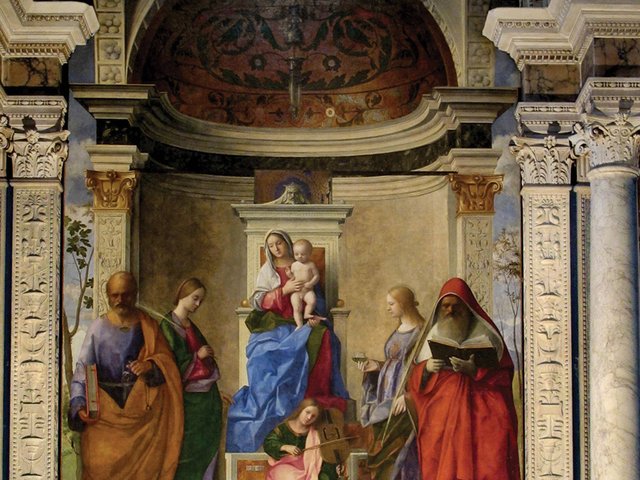The bibliography of Jane Lee’s short, but important study, is testimony to Derain’s changing critical fortune over the years. In the early 1920s he attracted a number of monographs by leading writers of the day; even the Italian painter Carlo Carra devoted a short book to him, paying homage to a fellow pioneer of the “return to order”. However, Derain’s prestige waned after the Second World War as a younger generation turned against traditional figurative painting, and relatively little has been written about him during the last forty years. In English, there seems to have been only one study, by Denys Sutton in 1959, and Derain’s work is not well known in this country. This recent neglect is only now beginning to be corrected, and Lee’s book, and the exhibition in Oxford for which in part it is a catalogue, should help the process of reappraisal.
Lee provides a narrative of the artist’s life and work, but is prevented by reason of space from addressing the broader issues raised by Derain’s work. However, it is perhaps worth reflecting on the reasons for the fall from favour of an artist who was once seen as the rival to Picasso. One factor is political: Derain was accused of wartime collaboration, and though the charge was unfair, his reputation remained sullied, particularly in France. More important, though, has been the tendency of modernist critics and art historians to see formal innovation as both the essence of twentieth century art and a litmus test of quality. This has resulted in a neglect of those movements that were self consciously backward looking, and which sought to build on the European tradition of old masters, rather than break with it.
Derain, after his brief Fauve period, was among the first to turn to the museums in an attempt to forge a contemporary style from the language of the past. To a later generation, however, his work has looked simply old-fashioned.
The sea-change in art criticism of the last decade has led to a profound reassessment of the interwar period. The ideological climate of the “return to order” is now better understood, and exhibitions such as the Tate’s recent “On Classic Ground” (in which there were no less than six Derains) have suggested that “conservative” art can also be good art. Without such a shift in critical taste, it is hard to imagine an exhibition of Derain’s robust nudes, Poussinesque landscapes and seventeenth-century style still lifes, being held at Oxford’s Museum of Modern Art (even if the Museum’s Director, David Elliott, perhaps trying to deny the aret’s conservatism, insists in his preface that Derain was a “velvet revolutionary”).
The relationship between “originality” and “quality” is central to any appraisal of Derain’s work. He once said that the mission of art was to “equalise time”, and that the cult of originality was an unfortunate invention of the eighteenth century. He believed that the Old Masters had a timeless metaphysical quality and that by emulating them his work would acquire universal meaning. But did it? Conscious imitation of the past (and “conscious” is perhaps the crucial word) can lead to sterile academicism, and Derain’s work is not always free of this. Some of the paintings illustrated here, such as “Nude with an Apple”, seem perilously close to kitsch. Lee is excellent at bringing out the intellectual interest of Derain’s vision of art, but does not pause in her fast-paced chronology to defend her belief in the quality of his works, nor to assess how far he achieved his goals.
The author tells the story of Derain’s career in the first section of the book with commendable conciseness and readability, drawing extensively on the artist’s letters and manuscripts. She shows how his early interest in realism (he even tried his hand at writing Zolaesque vignettes of street life) gave way through friendship with Vlaminck to a brief flirtation with Fauvism. He abandoned this path when he found it “illogical” to deviate from naturalistic appearances while still proclaiming some sort of fidelity to nature. Like many of his contemporaries he became fascinated with Cezanne, and through him began to reflect on the tradition of Poussin, Titian and Giorgione. As Lee comments perceptively: “Cezanne’s classicism allowed Derain to step back from the motif and compose in a Giorgionesque manner. This is the opposite of the stance taken by Braque and Picasso who were closing in on the motif, moving away from the classical allusions in Cezanne towards a simply abstract, highly ordered, geometrical composition”.
Lee shows how Derain drew on a formidable range of Old Masters and styles in the interwar years. She underlines the serious intellectual dimension of his work, and provides a convincing analysis of its complex symbolism. In the chapter titled “De Picturae Rerum” (the name of his unfinished treatise), she discusses the many different aspects of his vision of the spiritual role of art. She describes Derain’s difficult experiences during the war, and shows how he refused in his last years to have any dealings with officialdom following the government’s failure to condemn the investigation into his war-time conduct. However, he seems to have accepted stoically his post-war rejection by a younger generation of painters. Inevitably with a book of deliberately modest size, one longs for more: more information about Derain the man, about his collection of primitive art, about contemporary reactions to his work. Lee, however, has provided an invaluable introduction to this artist, and her comments in the second part of the book on the paintings in the Oxford show, are rich in scholarly detail. Lee successfully makes the case that recent neglect of his work has distorted our view of French painting between the wars.
Jane Lee Derain (Phaidon Press, Oxford, 1990) 144 pp, 50 colour plates, 80 b/w, £25



